Creating a thriving dahlia flower garden requires more than just planting dahlias in the perfect spot. It’s about finding the right companion plants to enhance their beauty and health. Companion planting is a powerful gardening technique that pairs plants to create mutually beneficial growing conditions. In this guide, we’ll explore the best dahlia companion plants and planting combinations to help you design a vibrant and harmonious garden. Whether you’re new to growing dahlias or looking to refine your companion planting strategy, this companion planting guide will provide everything you need to make your dahlia garden flourish. Let’s dive into the art of planting dahlias with the perfect partners!
Table of Contents
Why I Love Dahlias
Decades ago I was given some dahlia tubers by a friend, and my love of dahlias began. In addition to making beautiful cut flower bouquets, I enjoy the fact that dahlias multiply so well. That appeals to my frugal nature. I enjoy sharing divided dahlia tubers with friends or filling in additional spots in my USDA Plant Hardiness Zone 8b flower beds with dahlia plants.
Dahlias also make a great party theme. Whether you’re hosting an outdoor garden party or an indoor event, dahlias make gorgeous table centerpieces. Since the blooms are edible, they can also add color to a variety of party foods.
In our yard and garden, we have four separate areas where we grow dahlias. We have a dedicated dahlia bed (formerly our hybrid tea rose garden), a dahlia border by our orchard, dahlias in our vegetable/cutting garden, and dahlias mixed in with the perennials in our perennial garden. The dahlias in the dedicated bed and the vegetable/cutting garden (pictured above) get dug up and stored over the winter. The dahlias in our perennial garden and our orchard border get left in the ground all year.
Dahlia Companion Plants: Flowers
Annuals
Dahlias pair wonderfully with annual flowers that complement their bold blooms, fill in gaps, and provide season-long color. Here are some of the best annual companions for dahlias:
Cosmos: Light and airy cosmos contrast beautifully with the dense blooms of dahlias. They add a naturalistic touch and attract pollinators like bees and butterflies. Dahlias and cosmos are one of my favorite flower combinations in the cutting garden.
Zinnias: Zinnias and dahlias thrive in similar conditions and offer a burst of complementary colors. Their upright growth habit mirrors dahlias, creating a cohesive look.
Snapdragons: These tall, spiky flowers add vertical interest and pair well with dahlias’ rounded blooms. Snapdragons also extend the garden’s color palette.
Marigolds: Low-growing marigolds provide a vibrant, warm-toned ground cover that pairs beautifully with taller dahlias. They also help deter pests like aphids and nematodes.
Nicotiana (Flowering Tobacco): Nicotiana’s fragrant, star-shaped flowers and lush foliage create a lovely contrast and fill in spaces around dahlias.
Lobelia: Trailing or compact varieties of lobelia bring a soft, cascading effect to the base of dahlias, with their vibrant blue or purple flowers offering a striking color contrast.
Petunias: Petunias are excellent for filling in gaps with their profuse blooms. They come in a variety of colors that can either match or contrast with dahlias.
Cleome (Spider Flower): Cleome’s tall, airy structure and delicate flowers create a dynamic backdrop or filler alongside dahlias without overwhelming them.
Verbena: Both upright and trailing varieties of verbena produce small clusters of blooms that provide a soft texture around dahlias and attract pollinators.
Perennials
Dahlias thrive when paired with companion perennials that complement their growth habits, bloom times, and soil needs. Here are some of the best companion perennials for dahlias:
Salvia (Meadow Sage): Salvias are drought-tolerant, deer-resistant, and attract pollinators. Their vertical spikes contrast beautifully with dahlias’ rounded blooms.
Echinacea (Coneflower): With their daisy-like blooms, echinaceas add texture and a naturalistic feel to dahlia beds while attracting pollinators.
Coreopsis: These cheerful, low-growing plants with abundant blooms offer a colorful ground-level complement to tall dahlias.
Rudbeckia (Black-Eyed Susan): Rudbeckias’ warm-toned flowers echo and contrast dahlia colors, extending the bloom season in the garden.
Phlox: Tall or creeping varieties of phlox provide a lush, fragrant backdrop and fill gaps between dahlia blooms.
Helenium (Sneezeweed): With their autumnal tones and long flowering season, heleniums make great companions to late-blooming dahlias.
Sedum (Stonecrop): Low-maintenance sedums, especially the upright varieties, offer foliage interest and late-season blooms to contrast with dahlias.
Penstemon: With tubular flowers and upright growth, penstemons add height and attract hummingbirds to the garden.
Verbena bonariensis: These airy, tall plants create a naturalistic effect and attract pollinators without overshadowing the dahlias.
Calamagrostis (Feather Reed Grass): The soft, vertical plumes of ornamental grasses like Calamagrostis provide a textural contrast to dahlia flowers.
Dahlia Companion Plants: Herbs
Dahlias can be paired with herbs to create a garden that is not only beautiful but also practical and fragrant. Here are the best companion herbs for dahlias:
Basil: Basil deters pests like aphids, thrips, and whiteflies while adding a pleasant scent to the garden. It thrives in similar conditions to dahlias and can fill in spaces at the base of their stems.
Dill: Dill’s tall, wispy foliage and delicate flowers complement the boldness of dahlias. It attracts beneficial insects like ladybugs and lacewings, which help keep pests in check.
Cilantro (Coriander): Cilantro produces small flowers that attract pollinators and predatory insects. Its feathery foliage adds a soft texture alongside dahlias.
Parsley: Parsley’s lush, low-growing greenery makes a lovely filler at the base of dahlias. It also attracts beneficial insects such as hoverflies and parasitic wasps.
Mint (in Containers): Mint can deter pests like aphids and beetles, and its fragrance adds interest to the garden. However, mint spreads aggressively, so it’s best grown in containers near dahlias.
Chives: Chives repel aphids and other harmful insects, and their purple flower clusters blend well with the vibrant colors of dahlias.
Thyme: Low-growing thyme acts as a ground cover around dahlias, helping to retain soil moisture. Its flowers attract pollinators, while its aromatic leaves deter pests.
Oregano: Oregano’s compact growth and tiny flowers make it a great companion for dahlias. Like thyme, it attracts beneficial insects and repels pests.
Fennel (in Moderation): Fennel’s tall, feathery foliage creates a striking visual contrast with dahlias. It attracts pollinators, though it should be planted at a slight distance to avoid competition for nutrients.
Lemon Balm: This fragrant herb repels pests like mosquitoes and attracts bees. It’s easy to grow and pairs well with dahlias in both appearance and function.
Dahlia Companion Plants: Vegetables
Dahlias pair surprisingly well with vegetables, making them a great addition to edible gardens. Many vegetables benefit from the same growing conditions as dahlias (full sun, well-drained soil, and regular watering) while also enhancing the garden’s health and productivity. Here are the best vegetable companion plants for dahlias:
Lettuce and Leafy Greens: Low-growing greens like lettuce, spinach, or arugula make excellent companions by covering the soil around dahlias. They help retain moisture and prevent weeds without competing for nutrients.
Beans and Peas: Legumes improve soil fertility by fixing nitrogen, which benefits dahlias. Pole beans can climb trellises nearby, making efficient use of space without shading the dahlias.
Radishes: Radishes grow quickly and thrive in the same soil conditions as dahlias. They can be interplanted to maximize space and add a quick harvest to your garden.
Carrots: Carrots’ deep roots aerate the soil, improving drainage for dahlias. They stay low to the ground, minimizing competition for sunlight.
Cucumbers: Cucumbers benefit from the shade provided by taller dahlias during hot afternoons. Their vines can be trained to grow away from the base of the dahlias to avoid overcrowding.
Squash and Zucchini: Large-leafed squash plants can provide a living mulch by shading the ground around dahlias, reducing weeds and retaining soil moisture. Ensure ample spacing to avoid competition for nutrients.
Kale and Swiss Chard: These leafy vegetables are sturdy and add vibrant greenery beneath dahlias. They grow well in partial shade created by taller dahlia plants.
Onions and Garlic: Alliums like onions and garlic deter pests such as aphids and beetles, which can damage dahlias. Their low growth habit means they won’t overshadow the flowers.
Beets: Beets grow underground, avoiding competition for sunlight and space. They also improve soil structure, benefiting dahlias’ root systems.
What Not to Plant with Dahlias
When planning a garden with dahlias, it’s important to avoid planting certain plants that may compete with them for nutrients, attract pests, or create unfavorable growing conditions. Here’s what not to plant with dahlias:
Large, Aggressive Plants
Sunflowers: While both dahlias and sunflowers love the sun, sunflowers are heavy feeders and can deplete the soil of nutrients, leaving dahlias undernourished.
Cannas: Cannas have similar water and nutrient needs but can grow aggressively, overshadowing dahlias.
Corn: Corn’s height and heavy feeding habit can shade dahlias and steal nutrients.
Deep-Rooted or Invasive Plants
Trees or Shrubs: Large woody plants like trees or shrubs with deep root systems compete with dahlias for water and nutrients. I would not plant dahlias near our rhododendrons, for example.
Mint: While mint repels some pests, its invasive growth can choke out dahlias. I only plant mint in containers.
Plants That Attract Pests
Cabbage and Other Brassicas: These attract aphids, slugs, and other pests that also target dahlias.
Potatoes: Potatoes are prone to similar pests and diseases, such as wireworms and fungal infections, which can spread to dahlias.
Eggplant and Peppers: These nightshades attract spider mites and whiteflies, which can harm dahlias.
Plants That Create Dense Shade
Tall, Dense Perennials or Annuals: Plants like hollyhocks or large ornamental grasses can cast too much shade, stunting dahlias’ growth and bloom production.
Moisture-Loving Plants
Iris: Iris prefers wetter soil than dahlias and can lead to overly damp conditions, increasing the risk of root rot.
Hostas: Hostas thrive in shady, moist conditions, which are the opposite of what dahlias need.
Nutrient-Hogging Vegetables
Pumpkins and Winter Squash: These heavy feeders require a lot of nutrients and space, leaving little for dahlias to thrive.
Tomatoes: Although compatible in some cases, tomatoes can outcompete dahlias for nutrients if not spaced and fertilized appropriately.
Allelopathic Plants
Black Walnut Trees: Black walnuts release juglone, a chemical that can inhibit the growth of nearby plants, including dahlias.
Quick Reference Dahlia Companion Plants Chart
| Dahlia Companion Plants | |
| Dahlia Companion Plants: Flowers | Dahlia Companion Plants: Herbs |
| Annuals | Basil |
| Cleome | Chives |
| Cosmos | Cilantro |
| Lobelia | Fennel |
| Marigolds | Lemon balm |
| Nicotiana | Mint (in a container) |
| Petunias | Oregano |
| Snapdragons | Parsley |
| Verbena | Thyme |
| Zinnias | |
| Perennials | Dahlia Companion Plants: Vegetables |
| Calamagrostis | Beans |
| Coreopsis | Beets |
| Echinacea | Carrots |
| Helenium | Cucumbers |
| Penstemon | Garlic |
| Phlox | Kale |
| Rudbeckia | Lettuce |
| Salvia | Onions |
| Sedum | Peas |
| Verbena bonariensis | Radishes |
| Squash | |
| Worst Dahlia Companion Plants | Swiss chard |
| Black walnut trees | Zucchini |
| Cabbage | |
| Cannas | |
| Corn | |
| Eggplant | |
| Hollyhocks | |
| Hostas | |
| Irises | |
| Hostas | |
| Potatoes | |
| Pumpkins | |
| Rhododendrons | |
| Sunflowers | |
| Winter squash | |
Dahlia Planting and Growing Tips
Some people may shy away from growing dahlias because of the time it takes to dig them up (if you choose to do so) and divide them. While that is completely understandable, I want you to know that I actually look forward to digging and dividing my dahlia tubers in the fall. I love being able to give away dahlia tubers to my colleagues at work and encourage others in their dahlia-growing endeavors. Others may shy away from dahlias because some of the taller varieties benefit from supports. Tall tomato cages offer an easy solution.
I offer a complete guide to dividing dahlias in the spring or fall, and I also have written a simple guide to planting and caring for dahlias.
Need More Planting Ideas?
Check out the tips for the best companion plants for eggplant to learn what to grow with those beauties. If you like the idea of companion planting, you might be interested in reading about the best companion plants for pumpkins, sunflowers, garlic, asparagus, rosemary, radishes, beetroot (beets), thyme, parsley, lupine, borage, stevia, kale, lemon balm, oregano, or the best companion plants for lavender. Get tips for growing stunning dahlias or vintage roses. Are you a beginning gardener? Try planting some foolproof, easy-care perennials, or learning about the best companion plants for columbine. There are so many exciting plants to grow!
Keep Track of Your Garden with a Journal Logbook
Now that you have learned about some compatible companion plants, keep track of your planting ideas, goals, and plans with a printable, editable free garden journal logbook. Choose the pages you want to use and customize them as you wish to record monthly, weekly, and daily garden tasks, lists, weather, and planting arrangements. There are also grid pages for easily designing the layout of your vegetable garden, flower garden, or landscape. Print it out and put it into a notebook you can take with you to the garden (that’s what I do). It’s nice to have all of your garden information in one place.
Get the garden journal logbook!
Free Online Garden Planner Layout Template
Now that you know which are the best companion plants for dahlias, you might need a way to plan your garden layout. Whether you are planting vegetables, flowers, or herbs near your lupine plants, this online garden planner can help you visualize your design and bring it to life. Arrange and rearrange the plants over and over, then print the layout when you are satisfied. With garden tasks that need your attention, this is one way to save time.
It’s fully customizable when you make your own copy and includes two editable chart pages for noting planting specifications.
Get my free online garden layout planner template!
Have a wonderful week, and may all of your dahlia-growing endeavors meet with success!

Lisa Mitchell is a wife, mom, and school librarian who likes to grow fruit, herbs, vegetables, and flowers on her family’s small Pacific Northwest farm. To learn more about what this website has to offer gardeners, click on over to the Garden page.

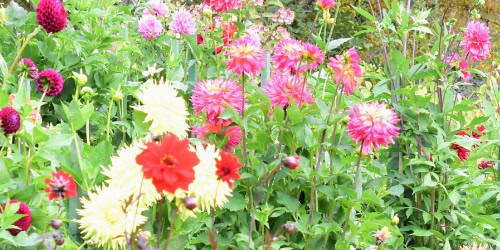
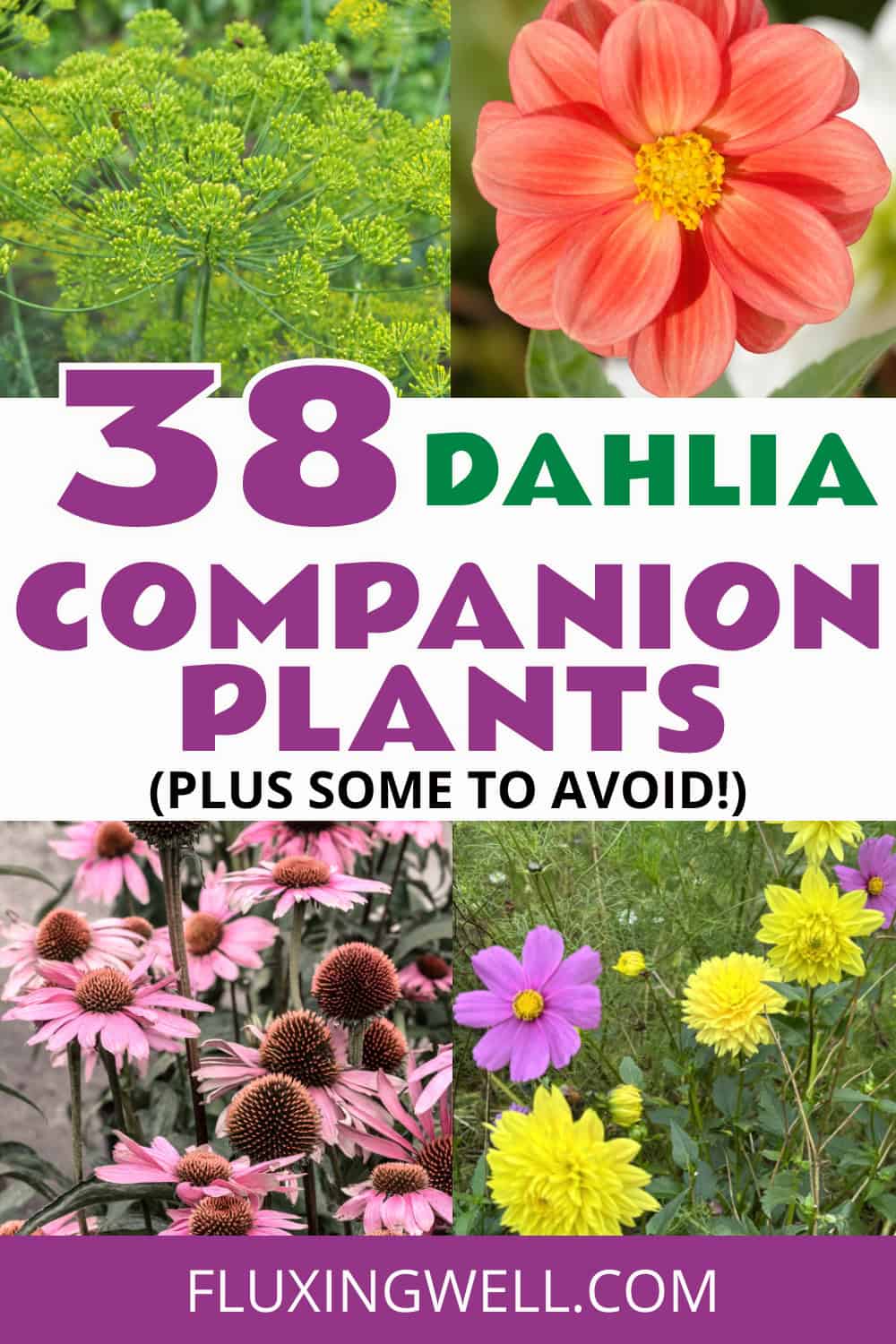
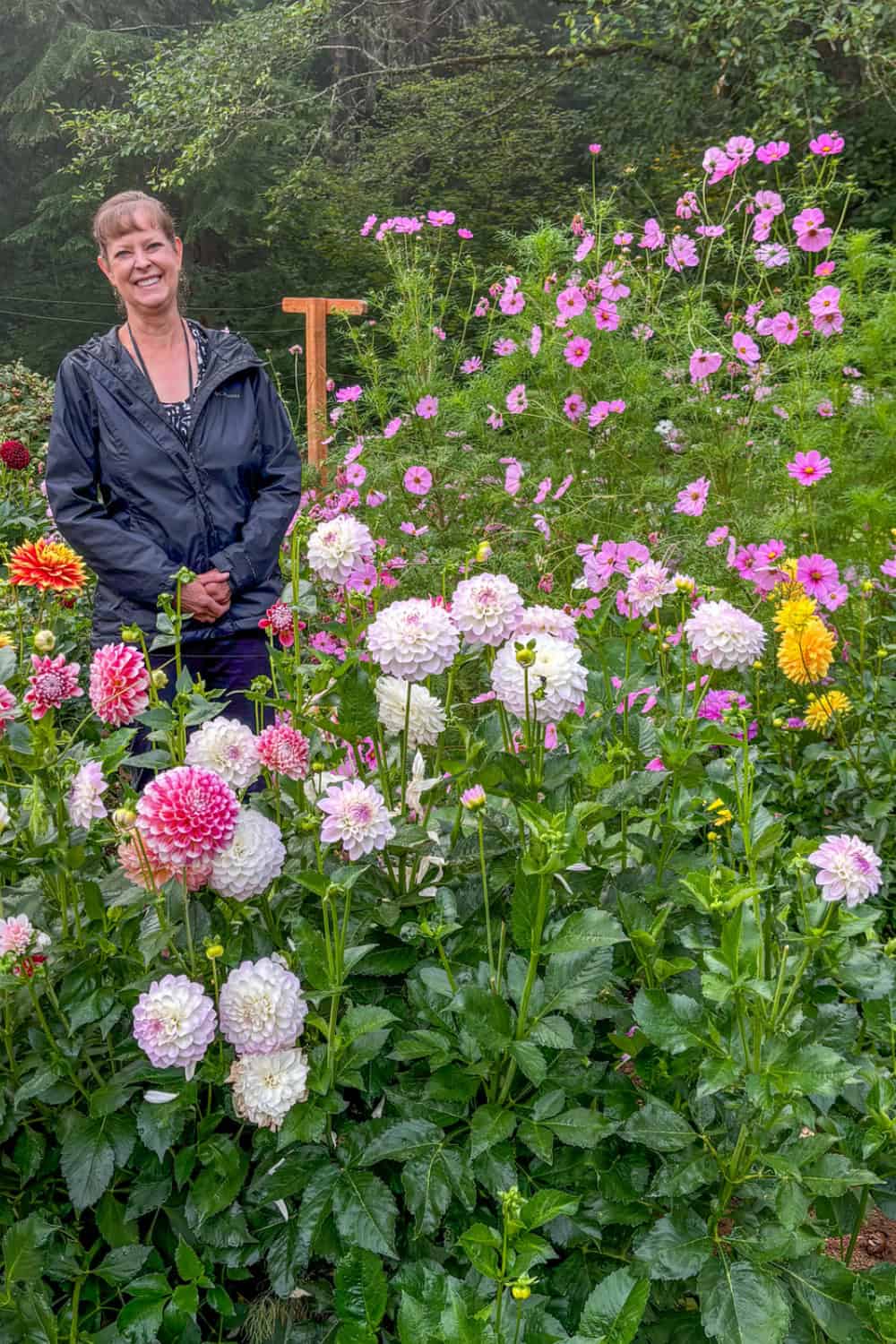
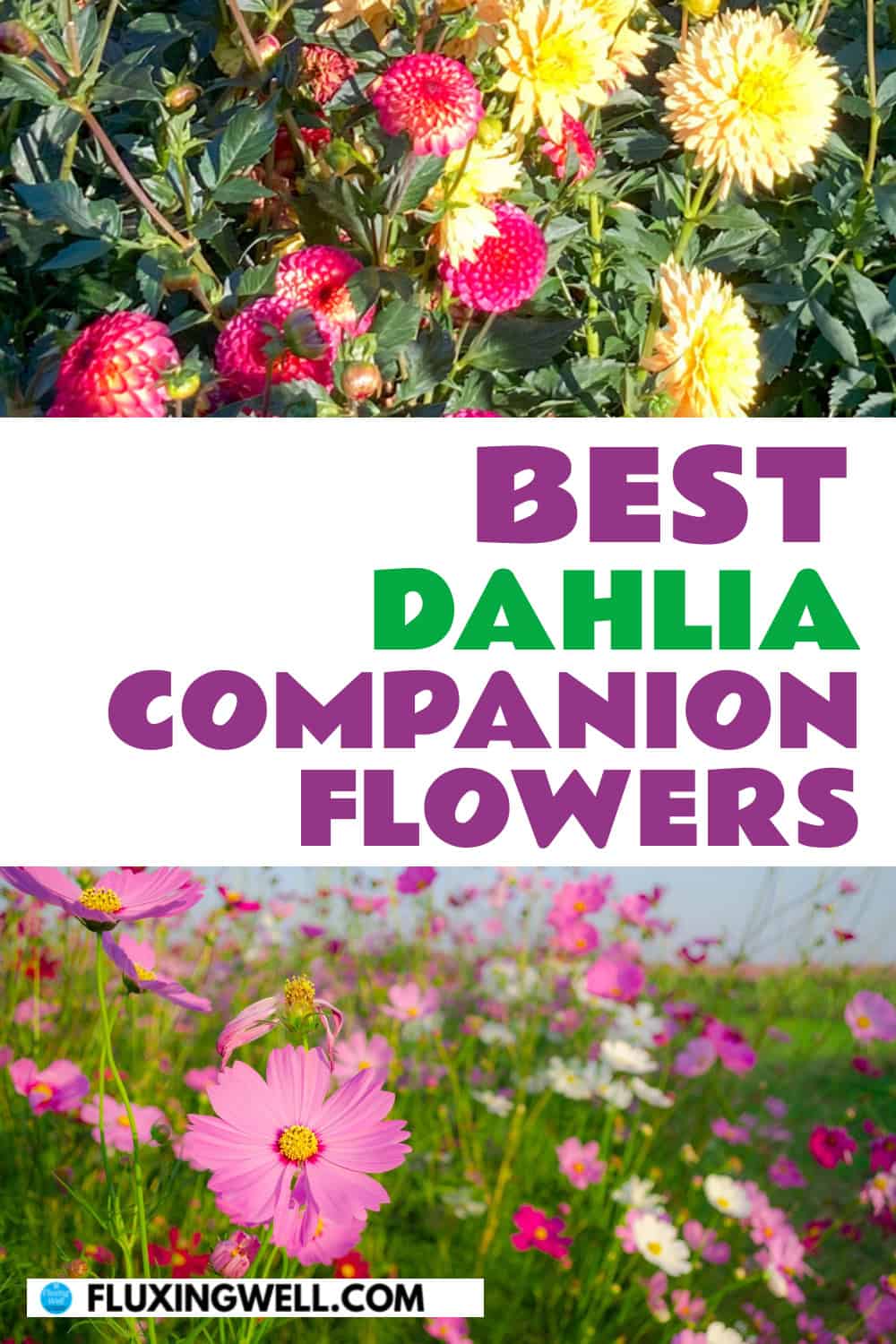
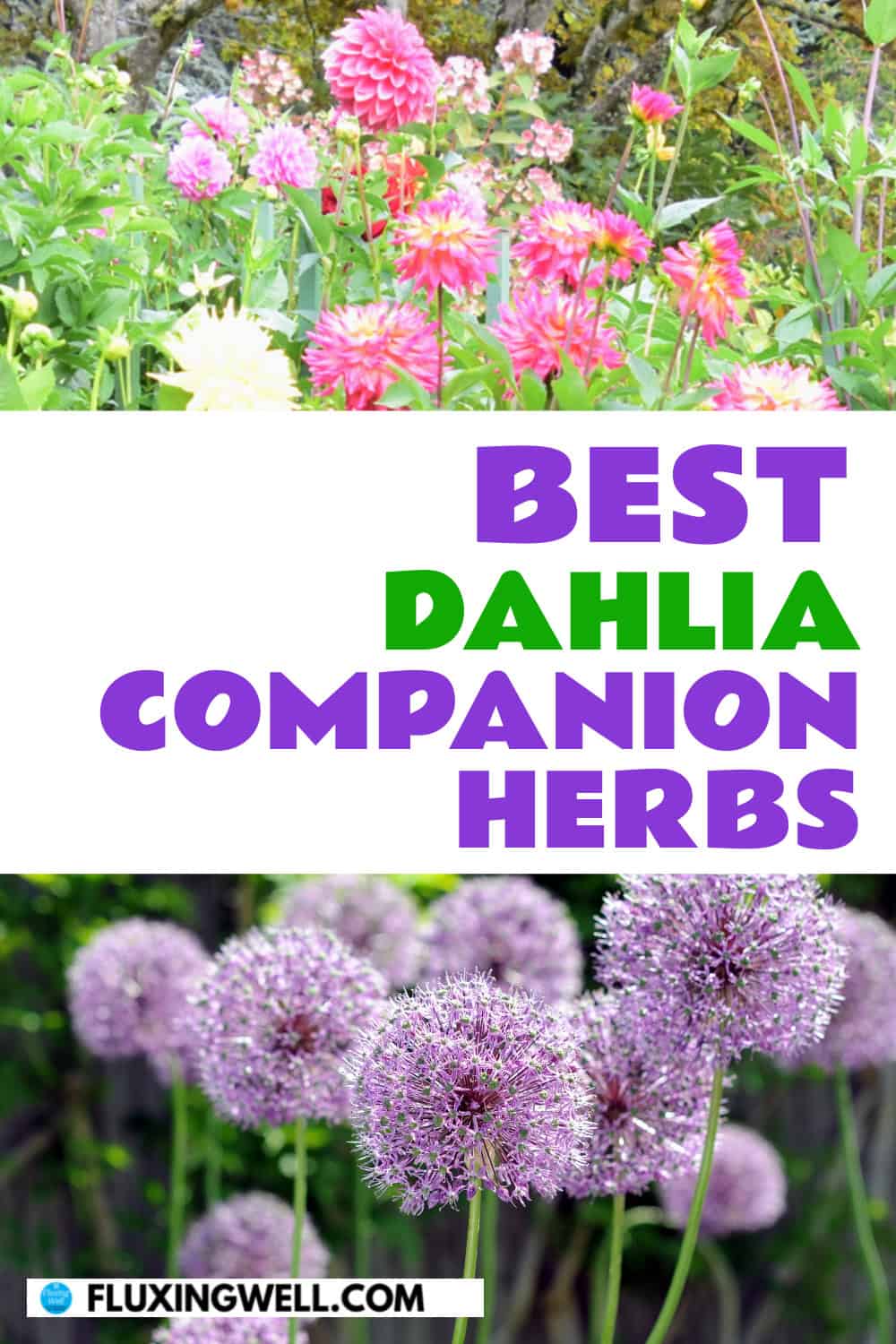
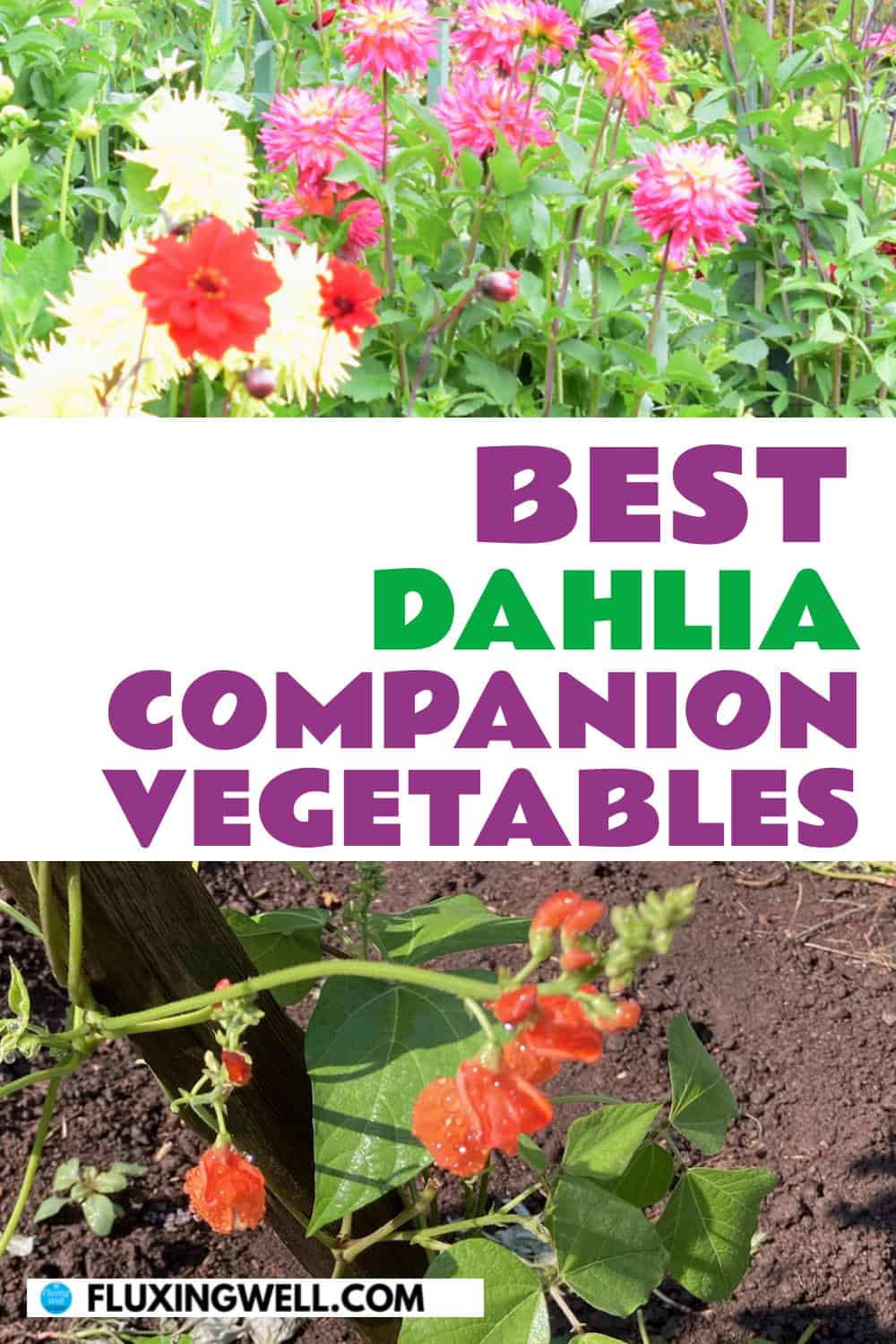
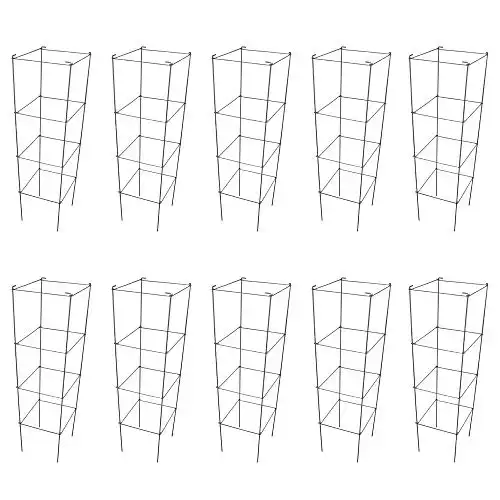
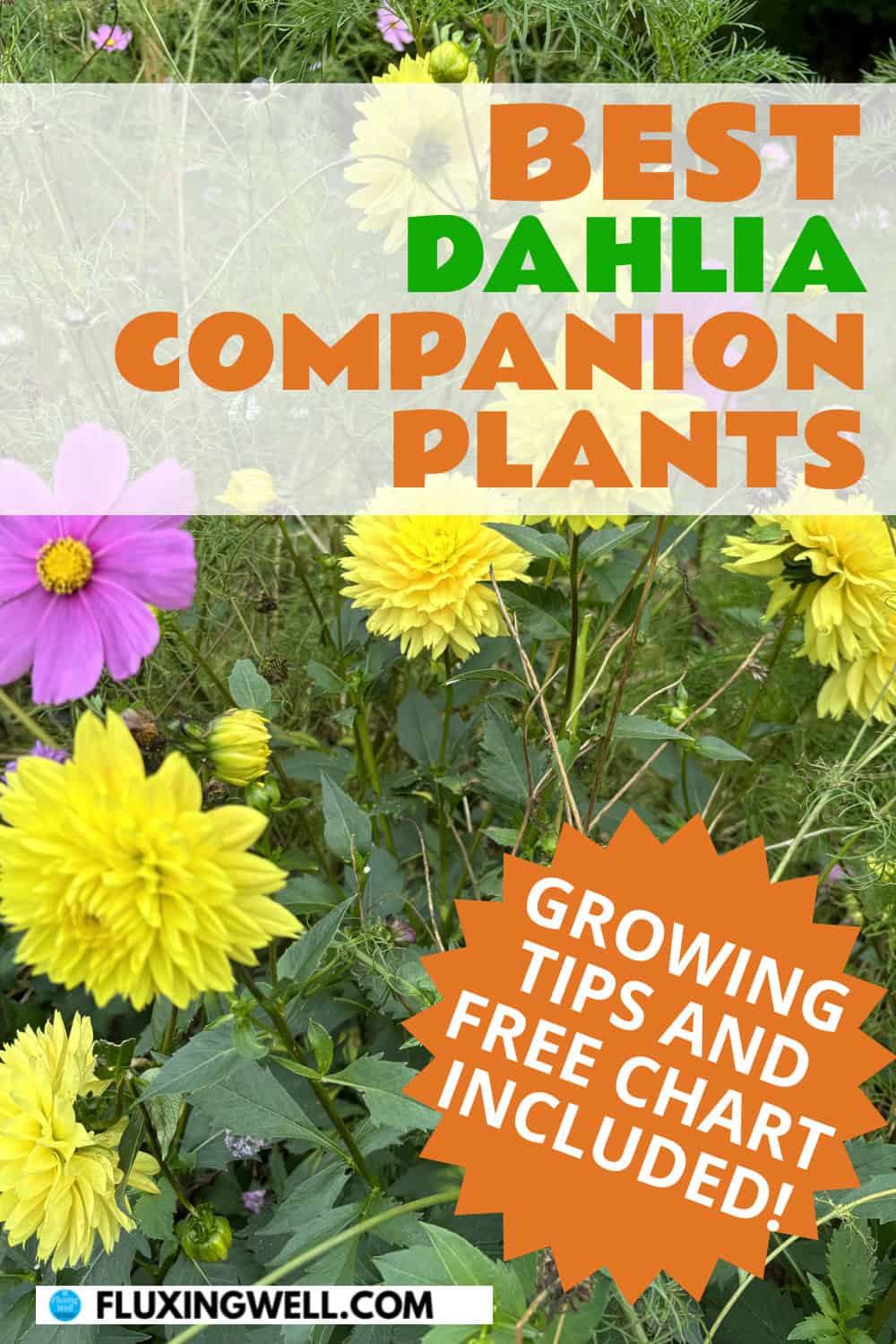
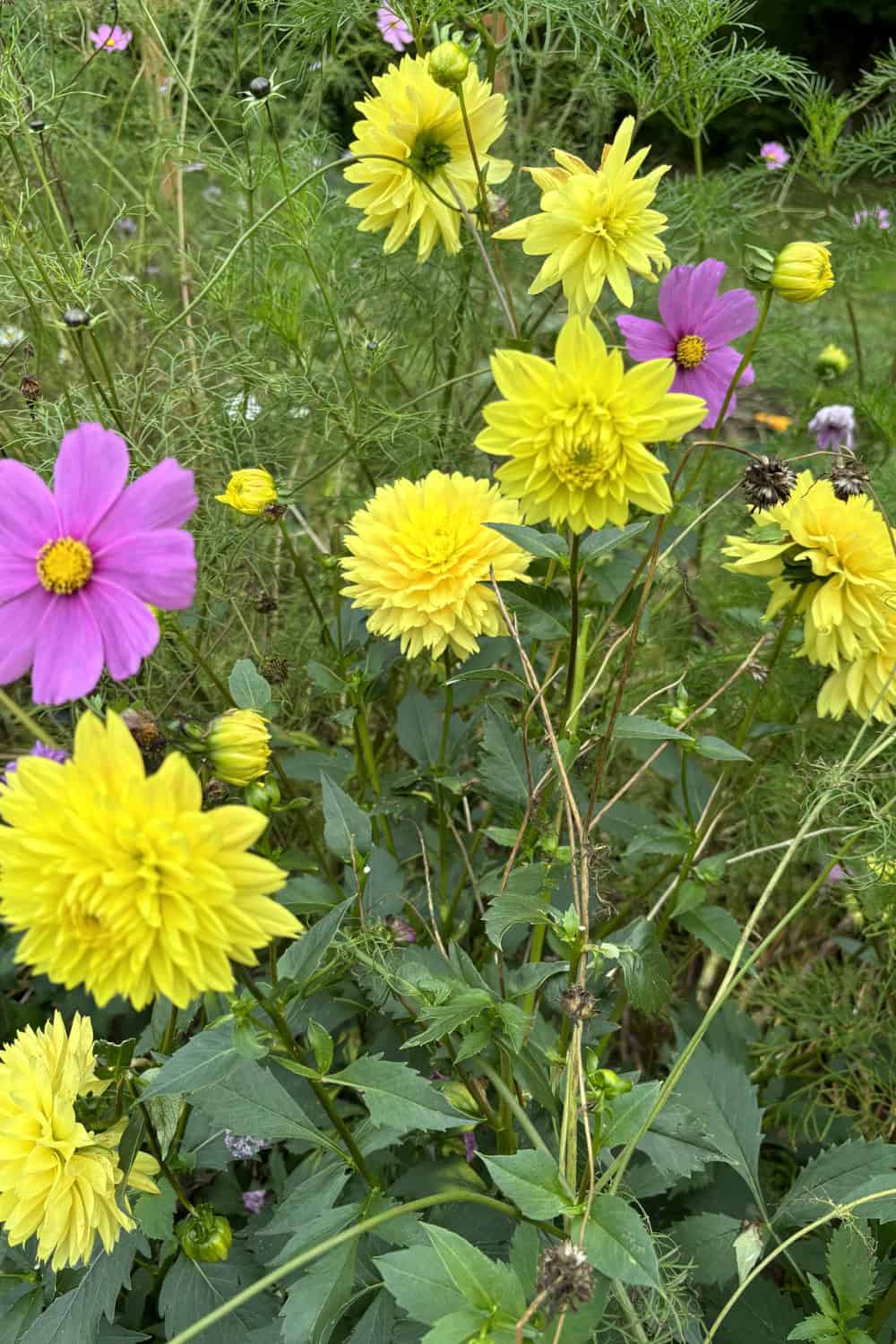
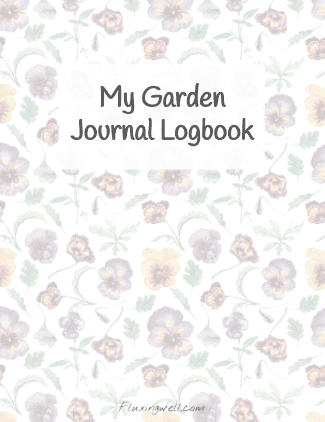
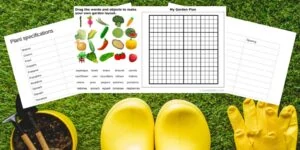
I love dahlias! They are so gorgeous!! I love the idea of pairing them with non flowering herbs! It would look great! Good list of dahlia companion plants to reference. I’m learning so much about gardening! Keeping a journal is a fantastic idea too.
I’m so glad you like the dahlia companion planting ideas. Happy gardening!
Love this list of 38 Dahlia companion plants. Very happy to know that Dahlias can multiply. Got to try planting it in my garden!
Yes, dahlias are very budget-friendly and make great pass-along flower gifts for fellow gardenings. Enjoy planting your first dahlias!
Thanks for the ideas for Dahlia Companion Plants. I’m good with vegetable companion plants but not annual flowers. Dahlias are a family favorite here. Thanks for this years garden ideas too!
You are most welcome. Always great to connect with fellow dahlia fans!
Dahlia plants are absolutely stunning. I love the photo of you and your garden! It definitely gives me inspiration to plant some at my home. It’s so handy to have 38 dahlia companion plants as a guide and great to have some to avoid as well.
I’m always happy to share what works well, and I’m glad this has given you some inspiration to grow dahlias and their companion plants in your garden.
Thanks for sharing this helpful and detailed information about Dahlia companion plants and the ones to avoid. I appreciate your gardening tips a lot!
Oh, thank you for your kind words. Gardening is a wonderful activity, and dahlias are fun to give away, both as blooms and as tubers.
Thanks for all the great information on dahlia companion plants. They’re my favorite flower, so I especially appreciate your careful attention to detail.
I love that dahlias are your favorite flower! There are so many varieties and color combinations. Happy companion planting with dahlias!
Thank you for this useful list of dahlia companion plants. I can’t wait to try out some of the planting combinations when I plant my dahlia tubers this spring.
Oh, excellent! I’d love to learn which dahlia companion plants you try and which are your favorites.